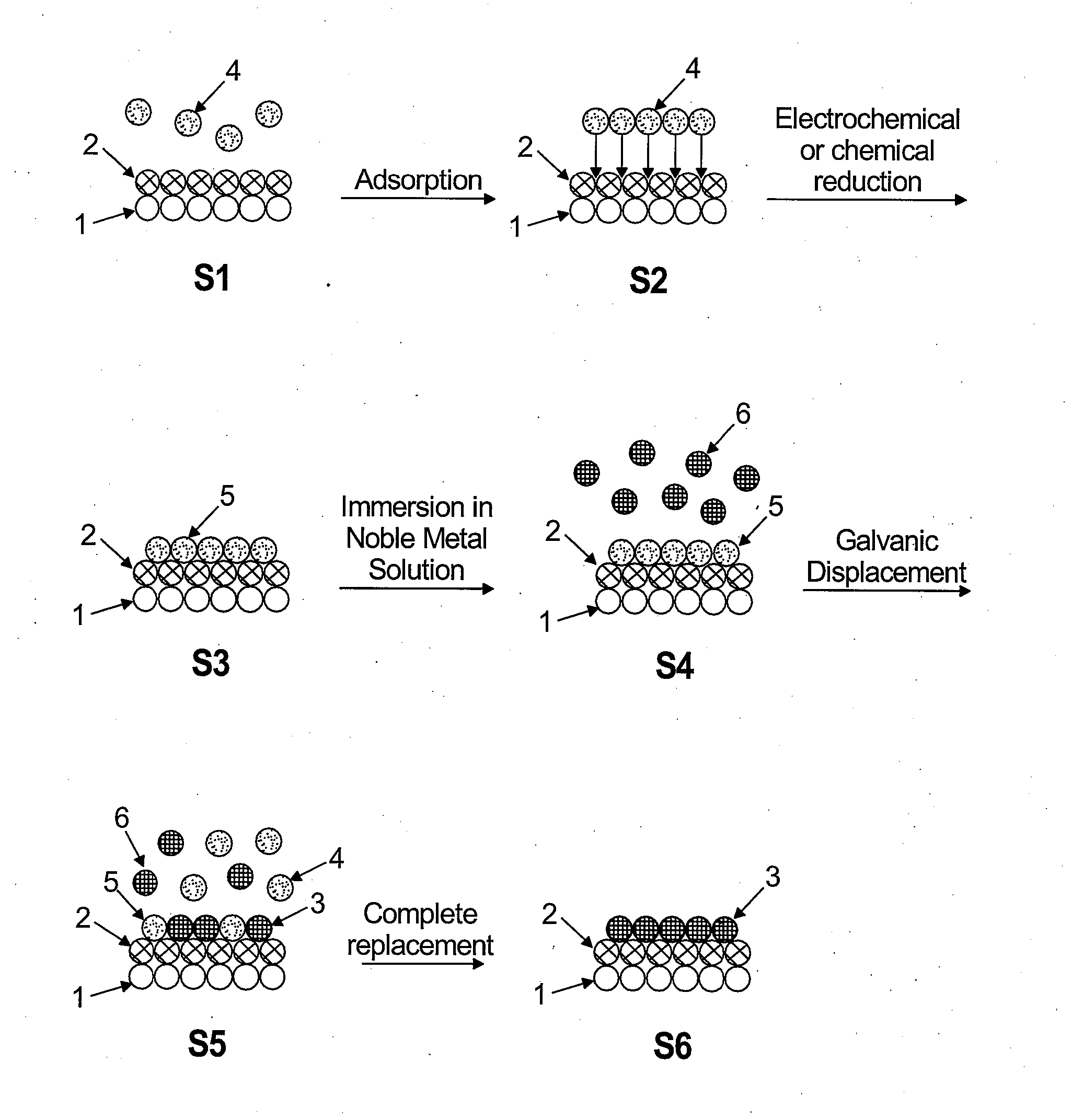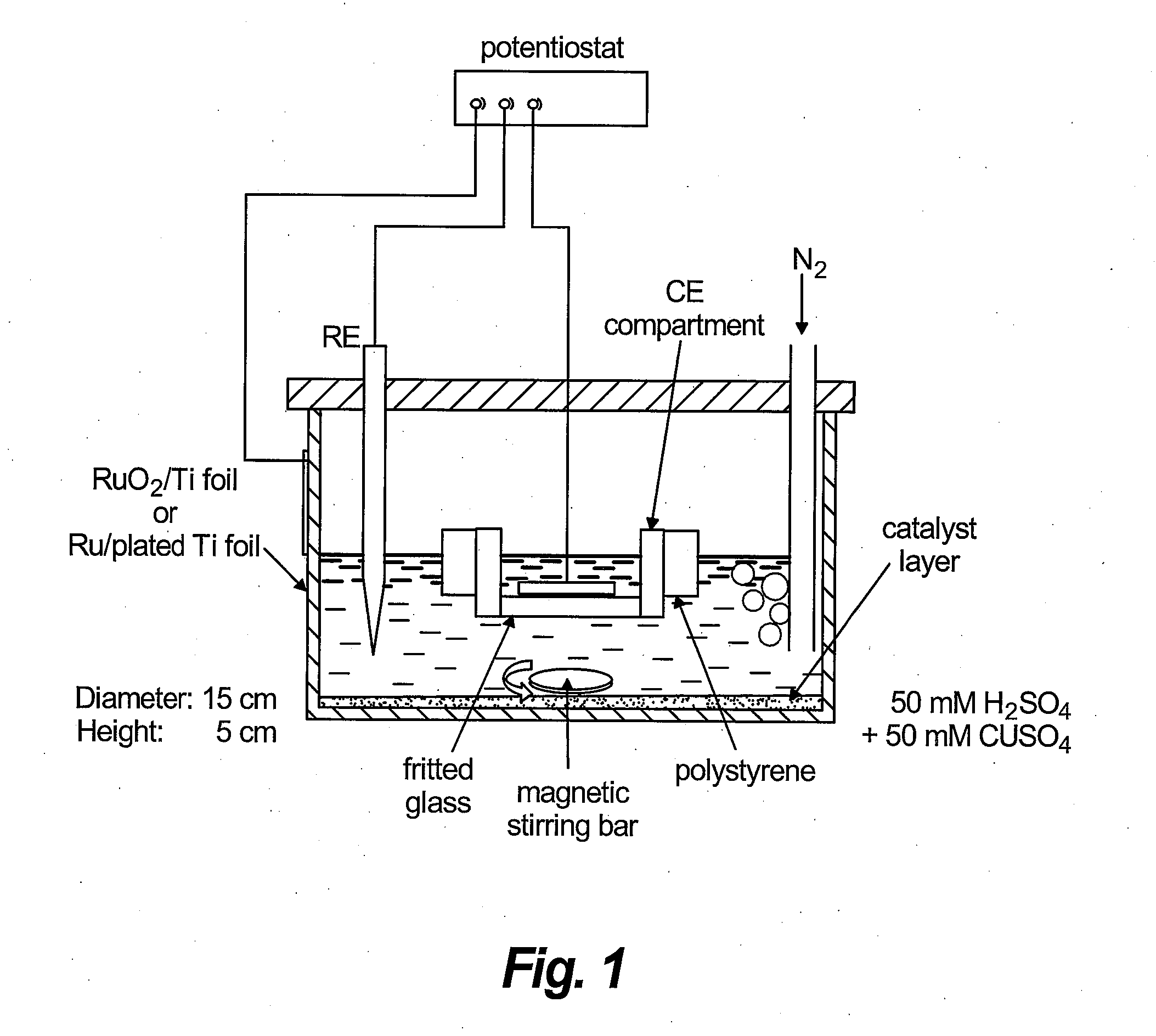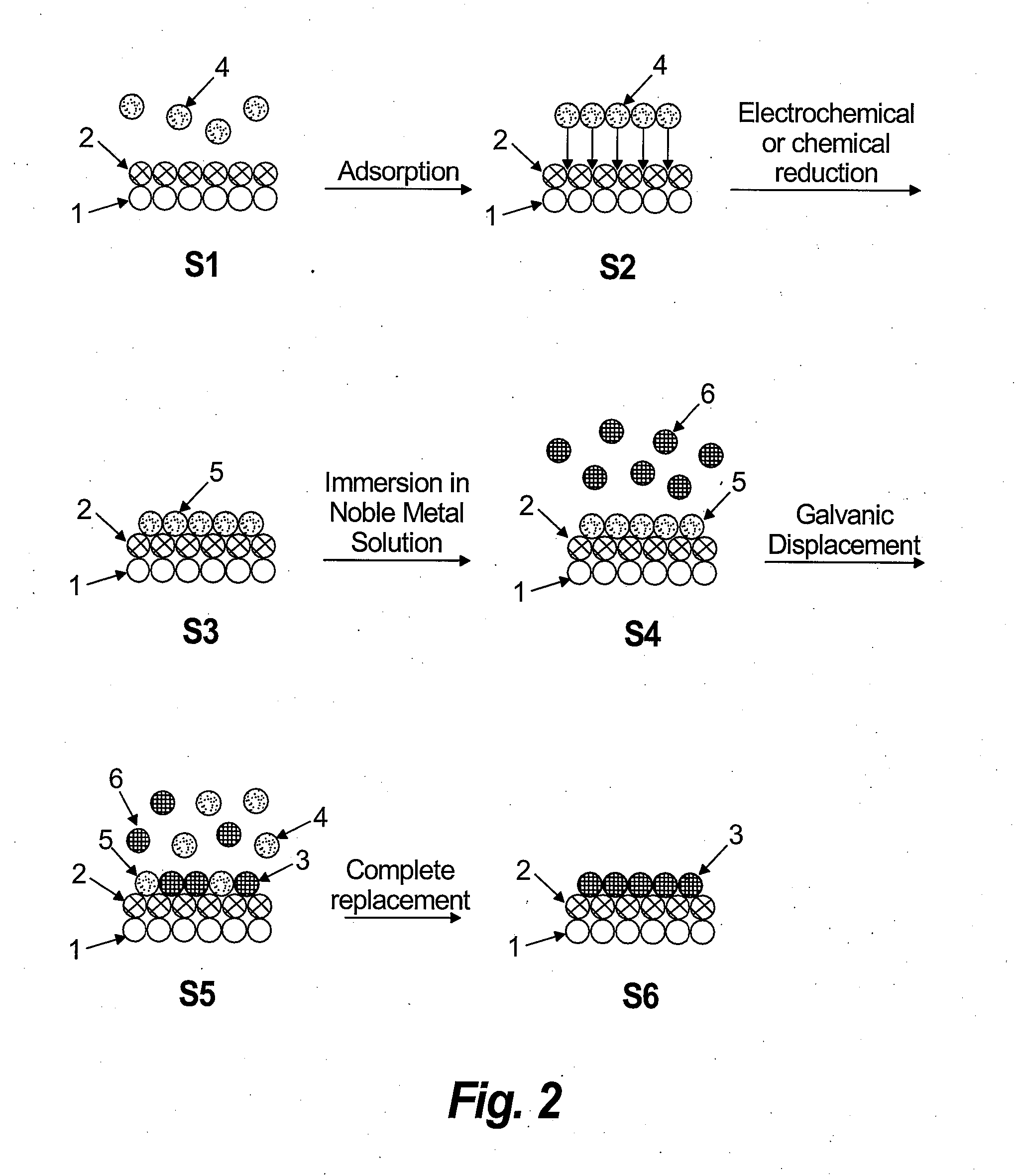Method and Electrochemical Cell for Synthesis of Electrocatalysts by Growing Metal Monolayers, or Bilayers and Treatment of Metal, Carbon, Oxide and Core-Shell Nanoparticles
a technology of electrocatalysts and electrochemical cells, which is applied in the direction of cell components, physical/chemical process catalysts, liquid/solution decomposition chemical coatings, etc., can solve the problems of high cost, poor stability under cyclic loading, and inability to successfully implement commercially available energy conversion devices
- Summary
- Abstract
- Description
- Claims
- Application Information
AI Technical Summary
Benefits of technology
Problems solved by technology
Method used
Image
Examples
example 1
[0071]The present apparatus and process may be illustrated by way of exemplary embodiments. In this example, the deposition process will be described with reference to deposition onto non-noble metal-noble metal core-shell nanoparticles. The core-shell nanoparticles may be initially formed using any method known in the art including, for example, those disclosed in U.S. Patent Appl. Pub. No. 2010 / 0216632. The deposition process in Example 1 will now be described using FIGS. 2 and 3 as a reference. The nanoparticle surface in FIG. 2 shows a portion of the non-noble metal core (1) along with the noble metal shell (2). Non-noble metal ions (4) are initially adsorbed on the surface by immersing the nanoparticles in a cell comprising the appropriate concentration of non-noble metal ions (4) in step S1. The non-noble metal (4) ions are contained in solution within the slurry illustrated in FIG. 1. Typical non-noble metal ions that may be used for UPD of an initial adlayer include, but are...
example 2
[0076]A second exemplary embodiment will now be described in detail with reference to FIG. 4 which shows the overall process flow for film growth by UPD and galvanic displacement using a cell. Initially, in step S10, particles of the desired composition, size, and shape are formed. Such particles may also be purchased from commercial vendors, such as E-TEK (39 Veronica Av., Somerset, N.J., 08873) and BASF (Germany). The particles used may be of any type onto which atomic layers of the desired material may be deposited. In a preferred embodiment the particles are of the type described in Section I above. Prior to deposition of an initial adlayer by UPD, it is necessary to prepare a slurry comprising ions of the desired UPD element as shown in step S11. The UPD element must be a material which exhibits underpotential deposition such as, for example, any of Cu, Pb, Bi, Sn, Ce, Ag, Sb, and Tl.
[0077]In step S12 the electrodes comprising the cell are introduced into the slurry solution. T...
PUM
| Property | Measurement | Unit |
|---|---|---|
| Time | aaaaa | aaaaa |
| Mass | aaaaa | aaaaa |
| Molar density | aaaaa | aaaaa |
Abstract
Description
Claims
Application Information
 Login to View More
Login to View More - R&D
- Intellectual Property
- Life Sciences
- Materials
- Tech Scout
- Unparalleled Data Quality
- Higher Quality Content
- 60% Fewer Hallucinations
Browse by: Latest US Patents, China's latest patents, Technical Efficacy Thesaurus, Application Domain, Technology Topic, Popular Technical Reports.
© 2025 PatSnap. All rights reserved.Legal|Privacy policy|Modern Slavery Act Transparency Statement|Sitemap|About US| Contact US: help@patsnap.com



